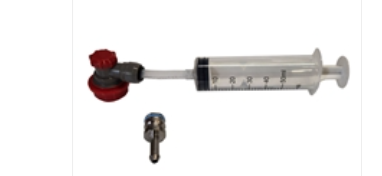- Joined
- May 6, 2025
- Messages
- 297
- Reaction score
- 235
Good morning, all
I know this has been discussed, but I just viewed a Brulosophy experiment that showed that adding the hops when pitching the yeast, gave results with no sensory difference from dry hopping at full Krausen, or even at end of fermentation.
If true, this is a convenient method for dry hopping. You can avoid oxygenation, without even using a hop bong. Just toss in everying at pitch time and the keg stays sealed up to closed transfer time. If you want to add finings for the cold crash, just use @Bobby_M clever syringe, below.
It certainly makes sense to add hops when the yeast are active, as yeast metabolizes and transforms the hop ingredient, and for the better, evidently.
My initial reservation was that adding at pitch time means the hops are in there for a very long time. Perhaps unwanted grassy notes? But no, again, the Brulosophy folk say, as they often do, that it does not matter.
Thoughts?
I know this has been discussed, but I just viewed a Brulosophy experiment that showed that adding the hops when pitching the yeast, gave results with no sensory difference from dry hopping at full Krausen, or even at end of fermentation.
If true, this is a convenient method for dry hopping. You can avoid oxygenation, without even using a hop bong. Just toss in everying at pitch time and the keg stays sealed up to closed transfer time. If you want to add finings for the cold crash, just use @Bobby_M clever syringe, below.
It certainly makes sense to add hops when the yeast are active, as yeast metabolizes and transforms the hop ingredient, and for the better, evidently.
My initial reservation was that adding at pitch time means the hops are in there for a very long time. Perhaps unwanted grassy notes? But no, again, the Brulosophy folk say, as they often do, that it does not matter.
Thoughts?
















































![Craft A Brew - Safale S-04 Dry Yeast - Fermentis - English Ale Dry Yeast - For English and American Ales and Hard Apple Ciders - Ingredients for Home Brewing - Beer Making Supplies - [1 Pack]](https://m.media-amazon.com/images/I/41fVGNh6JfL._SL500_.jpg)








